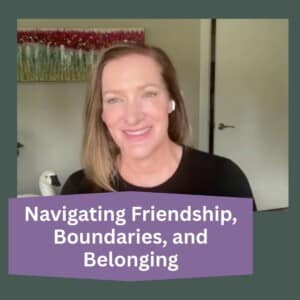 Navigating Friendship and Belonging in a Tech-Tangled World
Navigating Friendship and Belonging in a Tech-Tangled World
Raw and authentic conversation with members about making connection, allowing for new friendships in a modern age with technology, neurodivergence, or just uniqueness.
Summary: Friendship in the digital age is both familiar and newly complicated. On one hand, the desire for belonging and the skill of building relationships are timeless. On the other, phones, social platforms, and always-on technology add interruptions, temptations, and new social dynamics. Many people report opening a device with a clear intention only to be diverted by alerts, feeds, and reminders. For some, the result is a dip in productivity or a vague feeling of being pulled off course. A gentle, practical response emerged: acknowledge the pull without self-judgment, then experiment with simple countermeasures—keep a pen and sticky notes nearby, try playful to-do tools, and set small plans for what to do next time distraction appears.
The conversation also touched on the varied routes to connection. Some people naturally accumulate acquaintances, then cultivate a smaller circle of enduring friends over time. Others find the “how” of friendship less intuitive and benefit from explicit guidance. Resources like Dale Carnegie’s classic on interpersonal skills and newer, concrete guides—such as “The Asper Kids Secret Book of Social Rules” by Jennifer Cook O’Toole — can be surprisingly useful for people of any age, not only for neurodivergent readers. Simple behaviors help: approach others with genuine curiosity, notice the energy you bring into a room, and let relationships grow organically around shared interests rather than striving or pressing for closeness.
For young adults, the path can be especially bumpy. Relocations, language barriers, and the absence of built-in communities can compound loneliness. Social media introduces additional stressors—public comparisons, exclusionary posts, and screenshots that travel quickly. A helpful reframe is to expand what “friendship” can look like. Nontraditional or intergenerational connections, clubs anchored in a shared topic (like a library book or film group), volunteering, and low-pressure hobbies can create connection without demanding instant intimacy. These settings also shift the focus from “finding a friend” to “enjoying an activity,” which often lowers social friction.
Boundaries and endings are another part of the landscape. Longtime friendships sometimes dissolve because of diverging values, life stages, or misaligned expectations. While those moments can be painful, they don’t necessarily signify failure—only change. Clarity, kindness, and closure help: thank people for the season you shared, state your limits respectfully, and keep space in your life for relationships that fit who you are now. Equally, recognize the people who do show up—honorary “aunts,” colleagues, neighbors, or newer acquaintances who quietly become pillars.
Amid all this, small acts of self-attunement matter. Notice what recharges you, whether it’s a morning walk, a quiet hobby, or an uplifting book. Try tools that support your attention. Seek spaces where your interests live in the open—courses, leagues, meetups, or community groups. And when in doubt, lead with curiosity, warmth, and respect for your own boundaries. In a world that can feel noisy and hurried, those steady practices make room for friendships to take root—sometimes slowly, sometimes unexpectedly, but often exactly when and where you need them.
How: Recording and transcript available by signing in if you are already a member or by beginning JRF membership here.







